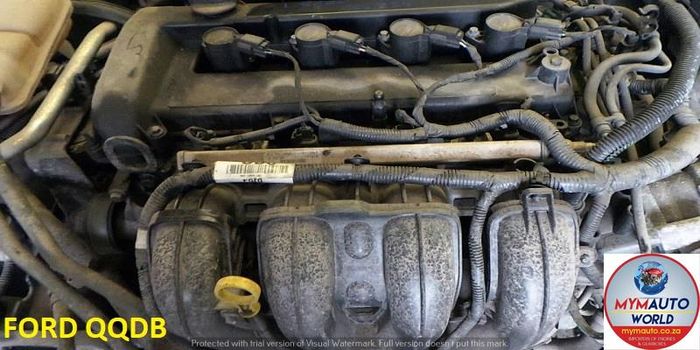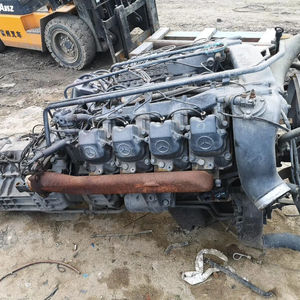Improve Your Experience with a High-Quality Opel Corsa Engine
Improve Your Experience with a High-Quality Opel Corsa Engine
Blog Article
Checking Out the Inner Workings of a Compact Automobile's Engine System
As vehicle drivers, we commonly take for granted the complex processes that happen within the confines of our car's engine system. In this expedition of a compact automobile's engine system, we will decipher the internal operations of this mechanical symphony, dropping light on the enigmas that drive us ahead on our day-to-day trips.
Combustion Process Introduction
The combustion process in a small lorry's engine system is a vital mechanism that effectively converts gas right into power to power the car. This process takes place within the burning chamber of the engine, where fuel and air mix, ignite, and generate regulated explosions. The combustion process contains 4 main stages: intake, power, compression, and exhaust.
During the consumption stage, the piston moves downward, drawing in a mixture of air and gas into the burning chamber. The next phase, compression, includes the piston relocating up, pressing the air-fuel mixture to raise its potency. Ultimately, in the power stage, the stimulate plug ignites the pressed mixture, leading to a fast development of gases that requires the piston pull back. This downward motion creates the power needed to drive the lorry. Finally, in the exhaust phase, the burnt gases are eliminated from the combustion chamber with the exhaust valve, preparing the chamber for the next cycle. This cyclic combustion process is basic to the procedure of a portable automobile's engine system, guaranteeing reliable power conversion for propulsion.
Piston and Cyndrical Tube Communication

The piston's specific fit within the cylinder is crucial for preserving ideal compression and protecting against energy loss during combustion. Limited clearances in between the piston and cyndrical tube walls guarantee reliable securing, permitting the piston to move efficiently without permitting gases to leakage past. Appropriate lubrication is also vital to decrease rubbing and put on between these components, enhancing longevity and efficiency.
Additionally, the layout and materials utilized in making the piston and cylinder impact engine effectiveness and durability. Modern engines frequently employ lightweight yet long lasting materials like aluminum alloys for pistons and cyndrical tube linings to decrease check it out inertia and boost thermal performance. Overall, the unified communication in between the piston and cyndrical tube is essential to the engine's performance and general efficiency.
Fuel Injection System Capability
Fuel injection systems in small automobile engines play an important function in precisely providing fuel to the burning chamber for controlled and efficient ignition. The gas shot system works by infusing fuel right into the combustion chamber at the ideal moment during the engine's procedure (opel corsa engine). This accurate timing makes sure that the gas blends uniformly with the air for proper burning, leading to boosted fuel effectiveness and minimized emissions
There are largely two sorts of gas injection systems made use of in compact automobile engines: port gas injection (PFI) and direct gas injection (DFI) PFI systems inject gas into the intake port prior to the consumption shutoff, while DFI systems inject fuel directly into the combustion chamber. Both systems have their benefits, with DFI offering much better gas atomization and PFI providing a much more cost-effective option.
Recognizing Engine Cooling Systems
Reliable procedure of a small vehicle's engine relies greatly on the efficiency of its cooling mechanisms. The cooling system in a compact vehicle typically consists of a number of elements working with each other to control the engine temperature. Understanding these engine air conditioning systems is vital for keeping the performance and longevity of a portable car's engine system.

Exhaust System Parts Explained
The ideal functioning of a portable automobile's engine cooling devices depends upon a complementary system referred to as the exhaust system, which consists of different important parts for making certain effective emissions and engine efficiency. The exhaust system includes parts such as the exhaust manifold, catalytic converter, muffler, and tailpipe. The exhaust manifold gathers exhaust gases from the engine's courses and cylinders them to the catalytic converter. The catalytic converter after that converts harmful toxins in the exhaust into much less hazardous emissions prior to releasing them with the muffler and tailpipe.
One crucial element of the exhaust system is the oxygen sensing unit, which monitors the oxygen levels in the exhaust gases to aid regulate fuel usage and ensure ideal engine efficiency. opel corsa engine. Additionally, the resonator may be existing in some exhaust systems to lower noise levels. In general, the exhaust system plays a vital role in preserving engine performance, reducing damaging discharges, and making certain a quieter driving experience for compact vehicle owners

Final Thought
To conclude, the compact car's engine system is an intricate mix of parts that work together to help with the burning procedure, transform gas into energy, and remove waste gases. Comprehending the internal operations of the engine system, consisting of the piston and cyndrical tube communication, gas shot system, engine cooling systems, and exhaust system parts, is essential for preserving ideal performance and effectiveness of the lorry.
The burning procedure in a portable lorry's engine system is a crucial system that efficiently converts fuel into energy to power the vehicle.Fuel shot systems in small automobile engines play an important function in exactly providing fuel to the combustion chamber for helpful site regulated and effective ignition.There are mostly 2 types of fuel shot systems made use of in small automobile engines: port fuel injection (PFI) and straight gas injection (DFI) Understanding these engine cooling devices is essential for keeping the performance and longevity of a compact lorry's engine system.
The optimum functioning of a compact why not try here car's engine air conditioning devices depends on a corresponding system understood as the exhaust system, which makes up various essential parts for guaranteeing efficient exhausts and engine performance.
Report this page